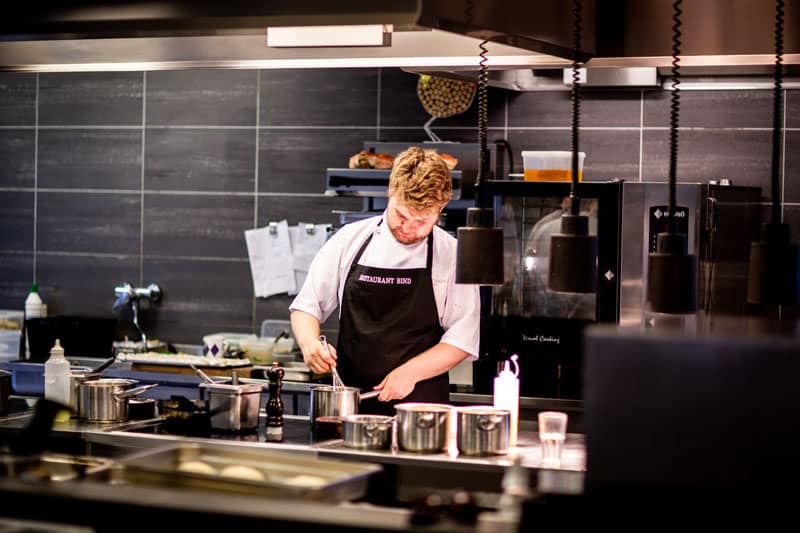In any commercial kitchen, fire is no small risk or hazard. The kitchen is a high-heat environment, and it’s designed to be well-insulated, to keep in the heat required for cooking. Over time, in any sized commercial kitchen, grease and grime begin to build up, which presents problems for the kitchen hood fire suppression system. Grease will cling to the nozzles that disperse your fire suppression agent, disabling the system’s ability to suppress and extinguish kitchen fires. This is a serious fire hazard, and a key reason that you must regularly maintain your kitchen fire suppression system.
One of the essential components of proper kitchen maintenance is adhering to your required kitchen hood fire suppression system inspection schedule. In this article, we will discuss how often these inspections are required, what happens during a kitchen hood fire suppression system inspection, and how you can prepare your restaurant or commercial kitchen for these inspections.
How Often Should My Kitchen Hood Fire Suppression System Be Inspected?
Your kitchen hood fire suppression system should be inspected every six months, according to NFPA 96. This inspection must be completed by a licensed fire protection company.
The inspector who performs your kitchen fire suppression system inspection will work to ensure that if there ever was a fire in your kitchen, your fire suppression system will activate and successfully put out the fire, while shutting off the gas or electric that powers your equipment.
What Goes Into A Kitchen Hood Fire Suppression System Inspection?
Your bi-annual kitchen hood fire suppression system inspection has a few purposes. The first, as you might expect, is to make sure your kitchen fire suppression system is performing as it should. Your professional inspector will also replace any faulty or old parts, as well as make any necessary changes to the system.
For example, if you’ve changed or upgraded the equipment in your kitchen, your system may have different requirements. This bi-annual inspection will ensure that your kitchen hood fire suppression system meets all fire code requirements, and is in great shape to protect your kitchen in the event that there is a fire.
Here’s a look at some of the most common tasks your inspector will perform while completing your kitchen hood fire suppression system inspection:
- All extinguishing agent nozzles are discharged and inspected for build-up
- All nozzle caps are replaced
- Extinguishing lines are blown out to ensure there is no blockage
- Manual alarm pull station is pulled to ensure it is functioning well
- Inspector checks pressure gauges to ensure proper PSI
- Gas shut off valve and microswitch are tested
- Inspector checks to make sure fans are operating properly
- Ensures all system components are compatible
- Checks for holes in hoods
- Ensures your system is using the proper cartridge for your kitchen
- Fusible links of the system are cut to see if the system activates properly
- Check that gas and electrical shut off when the system activates
- One the system has been activated, the inspector will install new fusible links with the date stamped on them. This serves as proof of service for the fire marshal inspection.
- Now, your inspection certification can be filed with the local fire authority.
- The inspector will tag the system showing certification was completed by a professional, and according to regulations.
- Your inspector will leave you with a Commercial Cooking System Service and Inspection report, and will send one to your local fire department.
Once your kitchen fire hood suppression system inspection is complete, your commercial kitchen is set for another six months. While you should continue cleaning your kitchen fire hood regularly, and complete monthly visual inspections, your system currently meets fire requirements, and should keep your kitchen safe until it’s time for your next inspection.
How Should I Prepare for a Kitchen Hood Fire Suppression System Inspection?
If you have a kitchen hood fire suppression system inspection coming up, you might be wondering what you need to do to prepare.
Clean Your Kitchen Hood Thoroughly
First and foremost, it’s important to clean. You should already be cleaning your kitchen hood regularly, but now is a good time to complete a deep clean to remove any grease or build-up that could affect the inspector’s ability to inspect your kitchen hood fire suppression system.
Know When Your Inspector Will Arrive
Have a clear picture of the inspection timeline. When will your inspector arrive, and how long does he or she expect that inspection will take?
Prepare the Kitchen For Inspection
To complete this inspection, the kitchen cannot be in use. The area should be clear of pots and pans, and everything should be sufficiently cooled down so that the inspector can safely access all components of the system.
It’s a good idea to schedule your kitchen hood fire suppression system inspection on an off-day, or on off-hours, so you have minimal staff on-site. During the inspection:
- You cannot use the kitchen
- Any staff present must be aware of the inspection
- The fire alarm will be temporarily disabled to properly complete the inspection
It’s important to understand these requirements for your kitchen hood fire suppression system inspection, so your kitchen is ready for the inspector. The better prepared you are, the faster your inspection will go.
If it’s time for your kitchen hood fire suppression system inspection, the Vanguard Fire & Security team is here to help. Whether you’re looking for an inspector, or you’re just not sure how to prepare for your inspection, our team has the expertise and the capability to get your inspection scheduled now, and answer any questions you might have. Give us a call at 800-444-8719 or contact us online today to schedule your inspection!


